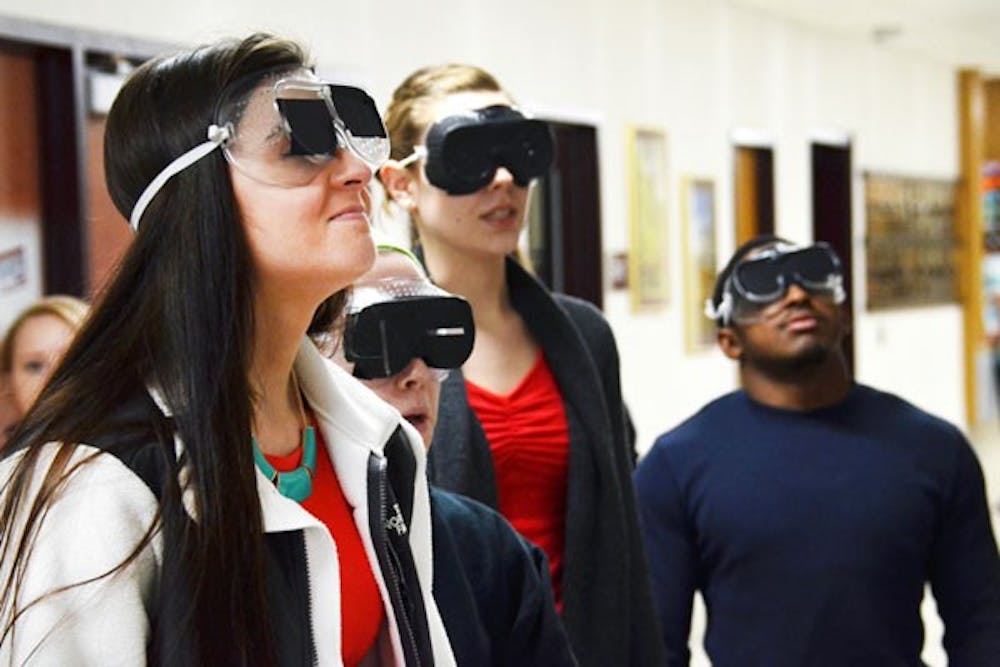'David Garcia Project' promotes empathy

The most effective strategy was to just ram through.
The handful of participants were tasked with trying to get in one of two wheelchairs and make their way into a bathroom without help. Shelby Township senior Meggan Wesselmann said it was more complicated than it seemed, evident by the number of students who got stuck in the entrance.
"I mean, I know it was a wheelchair accessible bathroom, but it still was harder to get to," Wesselmann said. "It was really eye-opening."
The students were participating in the David Garcia Project, a program put on through the Mary Ellen Brandell Volunteer Center, that works to promote and advocate for people with disabilities through different activities and reflection.
Wednesday night was one of the five David Garcia meetings and open to the public, but the group gives more than 20 a year for different classes, groups and registered student organizations.
The program focuses on several disabilities, including learning, physical, auditory and visual disabilities.
David Garcia was a Sept. 11 victim who suffered from an incurable and degenerate eye disease in which his vision worsened as he aged; however, Garcia was still active in his college life, social life and now in his after life as his memory lives on. The program was named after him to pass on his legacy and educate people about disabilities.
Carleen Quint, a Farmington Hills senior and a facilitator of the program, said the program is not meant to encourage sympathy for those with disabilities.
"We're teaching empathy, not sympathy. We don't want you to feel bad for people with disabilities," Quint said. "They simply have things they need to overcome, just like the rest of us."
Students were given several activities to complete that simulated different disabilities some students at Central Michigan University students have to overcome.
One activity had students read a biography of Katy Perry on a sheet of paper that imitated the condition of dyslexia, as letters were inverted and blurred. Another activity challenged students to trace the outline of a star only looking at a reflection of a mirror.
"An individual who has a writing disorder will probably only get a paragraph written if given a half hour," Quint said. "They'll worry about keeping on a straight line and keeping their letters readable, not about length."
The group was challenged to wear goggles that impaired their sight and walk through the Bovee University Center while wearing them.
"If you lost your vision today, yeah, it's going to be hard, but don't let it stop you," Quint said. "This is one of the things David stood for. Every day, he woke up with less and less vision, but he didn't let it stop him."
Andre Sanders, an Auburn Hills sophomore, said he took a lot away from the program.
"It gave me better insight, especially when it came to visual disabilities," Sanders said. "It gave you first-hand experience; it was definitely a good experience"



